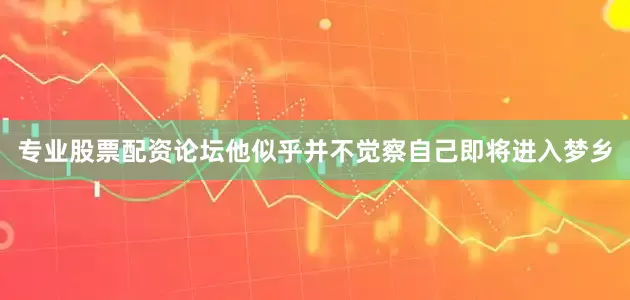
前言:本文转摘于V信公众号“金品化妆品供应链”原创文章,未经允许,禁止转摘。
Preface: This article is reprinted from the original article of the wechat public account“金品化妆品供应链”. Reprinting is prohibited without permission.
When it comes to the creation of Korean brands and the necessity of OEM manufacturing of Korean cosmetics or imported products in South Korea, the first thing we need to pay attention to is the import data of these imported products. Then, we can infer the preference of the Chinese consumer group for imported products and, on the other hand, see the consumption potential of the Chinese market.
展开剩余93%All these are of concern to our product managers, and even to the bosses of enterprises and brand founders, which will affect our decisions on launching new products, including the category, price, and even the necessity of the origin. So this is what we care about: Regarding the significance of OEM processing of cosmetics in South Korea: precisely analyzing the preferences and consumption habits of the consumer group for imported cosmetics. This is not only a market for Chinese consumers, but also serves as a reference for consumers in Southeast Asia, and even Central Asia and the Middle East. This article only conducts an analysis of the Chinese market. Regarding the analysis of the Southeast Asian or Central Asian and Middle Eastern markets, we will delve into it in another article.
In recent years, as the living standards and aesthetic standards of Chinese consumers have been continuously improving, this improvement has been influenced by different cultures both at home and abroad, and the technological level has also been enhanced. Therefore, the quality requirements for foreign products for Chinese consumers have been getting higher and higher. It is not the case that the more expensive, the better, but rather the pursuit of the "good quality and low price" that has lasted for five thousand years in China. After all, the working class makes up the majority and has become the main force of consumption. Let's first look at a set of data:
From 2021 to 2024, China's imports of cosmetics were mainly concentrated in Europe, America, Japan and South Korea. France, Japan, South Korea, the United States and the United Kingdom are the top five sources of imports. In 2024, these five countries together accounted for 79.9% of the total imports. Among them, France remains at the top, but the growth rate of its cosmetics exports to China has been on a downward trend since reaching a peak in 2018. The total export value in 2024 is 4.56 billion US dollars, a year-on-year decrease of 7.9%. Japan's exports to China in 2024 were 3.17 billion US dollars, a year-on-year decline of 27.0%. South Korea "hit the brakes" in 2024, and the decline in its exports to China narrowed to 5.5%, reaching 2.24 billion US dollars. The United States' export volume reached 1.76 billion US dollars in 2024, with the decline significantly narrowing to 3.4%. The UK completely reversed the situation in 2024. Despite a 37.4% year-on-year decline in exports to China in 2023, it achieved a 18.1% year-on-year positive growth in 2024.
Let me list and organize it for everyone. The top five countries for China's cosmetics imports in 2024 are France, Japan, South Korea, the United States and the United Kingdom.
The import value of France was 4.56 billion US dollars, accounting for approximately 27.9%.
Japan's import volume was 3.17 billion US dollars, accounting for 19.4%.
The import volume of South Korea was 2.24 billion US dollars, accounting for 13.7%.
The import volume of the United States was 1.76 billion US dollars, accounting for 10.8%.
The import volume of the United Kingdom was 1.32 billion US dollars, accounting for 8.1%.
These five countries together account for 79.9% of the total imports.
I would like to further understand the consumption habits and preferred prices of consumers in the Chinese market. At present, I am unable to give a detailed and accurate judgment. Because there is no exact public data indicating the specific price preferences of Chinese consumers for imported cosmetics from 2021 to 2024. Overall, however, imported cosmetics cover all price ranges. High-end markets such as L 'Oreal of France, brands under LVMH, and La Mer have a large number of consumers. In the mid-to-low-end market, some South Korean brands have attracted many consumers with their cost performance. From the perspective of the consumer group, Gen Z consumers may pay more attention to cost performance. Beauty products with high cost performance or those with multi-item combination promotion activities are more popular. Generation Z usually refers to those born between 1995 and 2009. They grew up in an era of highly developed Internet and are known as the "Internet Generation" or "natives of Cyberspace". Their behavioral patterns, consumption concepts and technological adaptability have distinct intergenerational characteristics.
In fact, looking at the percentage data of market growth trends over the past few years:
In 2021, the import value was 24.93 billion US dollars, which was approximately 160.89 billion yuan when converted to RMB at the exchange rate of 6.45 that year. The scale of China's cosmetics market was 402.6 billion yuan in 2021. Then the proportion of the total import volume is 1608.9÷4026×100%≈40.0%.
In 2022, the import value was 22.068 billion US dollars, which was approximately 148.307 billion yuan when converted to RMB at the average exchange rate of 6.72 for that year. The scale of China's cosmetics market was 485.81 billion yuan in 2022. The proportion of the total import volume is 1,483.07 ÷ 4,858.1 ×100%≈30.5%.
In 2023, the import value was 17.94 billion US dollars, which was approximately 123.786 billion yuan when converted to RMB at the exchange rate of 6.9 that year. The market size of China's cosmetics industry was approximately 516.9 billion yuan in 2023. The proportion of the total import volume is 1,237.86 ÷5169.0×100%≈23.9%.
In 2024, the total import volume was 16.33 billion US dollars, which is approximately 113.494 billion yuan when converted to RMB at an exchange rate of 6.95. In 2024, the consumption scale of cosmetics in China reached 1,073.822 billion yuan. The proportion of the total import volume is 1,134.94 ÷ 10,738.22 ×100%≈10.6%.
The above data indicate that during the years of the pandemic, China's overall economic development slowed down, and people's living standards gradually rose steadily, excluding inflation and the depreciation of the RMB and many other factors. In fact, it is a kind of downgrading of consumption in consumer market psychology. It can also be understood as the clarity of consumption. In market economics, another term is understood as "insufficient consumer confidence". The uncertainty about the future has increased the restrictions on people's consumption desires. However, from the perspective of the annual growth of the overall Chinese cosmetics market, a portion of the consumer group is gradually using domestic cosmetics to replace imported products. It has given rise to a large number of new and emerging internet-famous brand products.
If we talk about the future trend, it is inevitable that domestic products will dominate. After all, as the world's largest producer of cosmetics, China's products are sufficient to meet the demands of the entire Chinese consumer market. However, in terms of the overall scale of China's cosmetics consumption market, there still exists competition among foreign-funded enterprises, foreign brands, private enterprises and domestic brands. This kind of competition fluctuates. The market size of foreign-funded enterprises is also gradually being compressed by domestic brands.
Bringing the topic back to the significance of OEM processing of cosmetics in South Korea: precisely analyzing the preferences and consumption habits of the consumer group towards imported cosmetics. There is still a certain group of consumers in the Chinese market who like and prefer imported cosmetics. Although it has been declining year by year, it still has a certain market share. In consumer psychology, the consumption anchors that prompt consumers to make up their minds about a product are diverse. Price and quality are common and important anchors, as well as brand image and product scarcity.
In the next article, I will elaborate on the decisive factors of price anchors and quality anchors, which have certain reference value for the e-commerce model strategies of brand products and even the promotional strategies of stores.
Data source
• Government department websites: The official website of the General Administration of Customs will release relevant data on imports and exports, and the official website of the National Bureau of Statistics also has relevant data on retail sales of consumer goods, from which information on the import of cosmetics can be obtained.
• Industry association reports: Industry associations such as the China Chamber of Commerce for Import and Export of Medicines and Health Products will release analysis reports on the import and export situation of cosmetics, including data such as the source of imports, product categories, and market size.
Market research institution reports: Reports released by institutions such as Euromonitor and New Generation Market Monitoring will cover contents such as the size of the cosmetics market, consumption trends, and consumer preferences.
发布于:广东省配资公司行情提示:文章来自网络,不代表本站观点。






